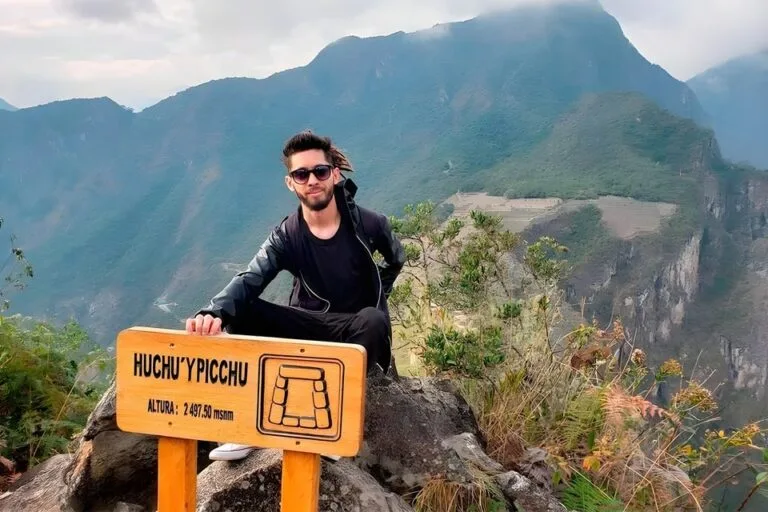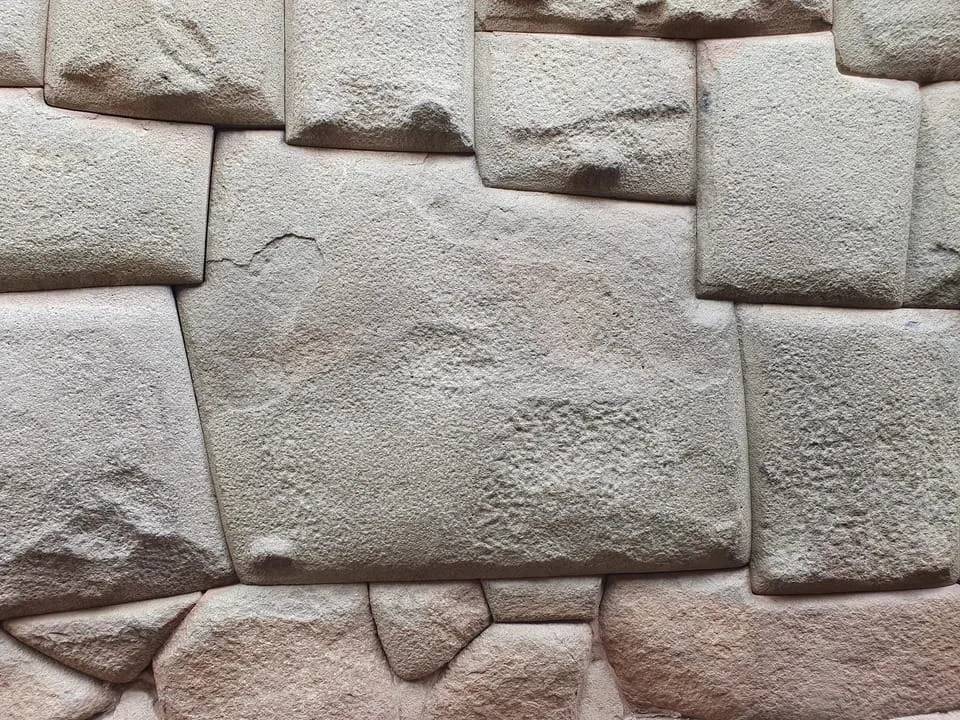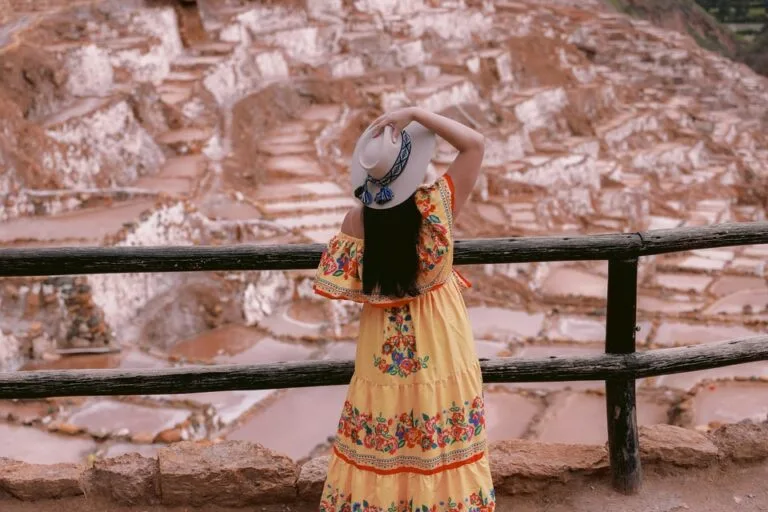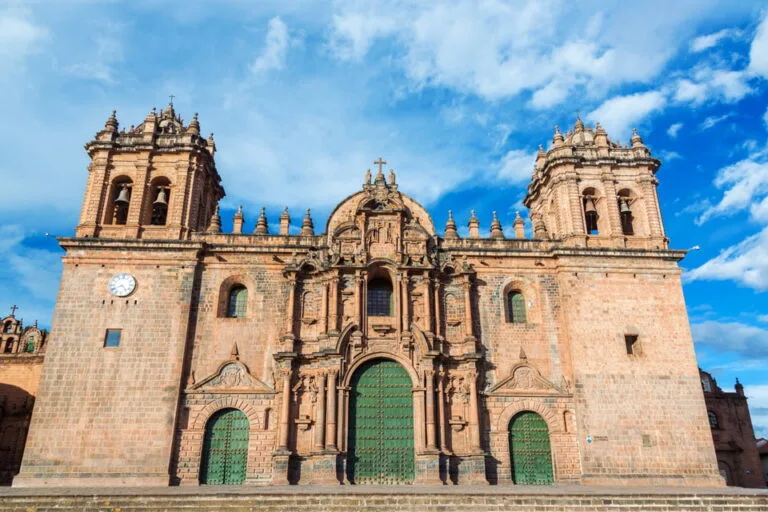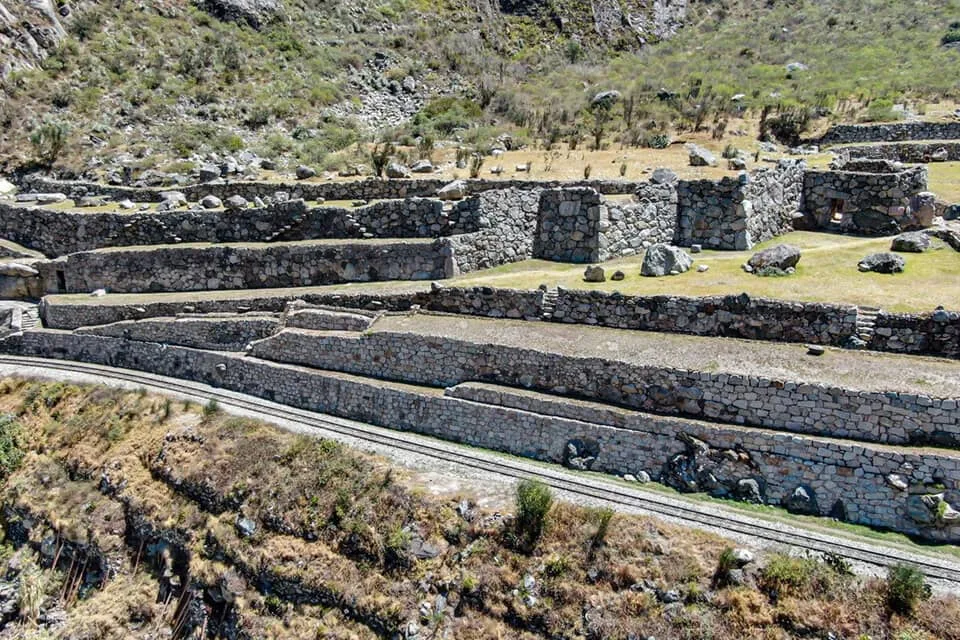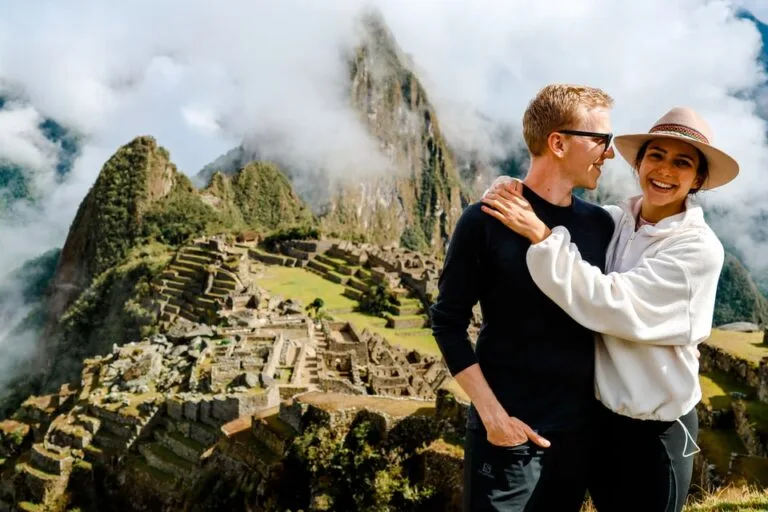Perched on the northern outskirts of Cusco, Sacsayhuaman stands as one of the most enigmatic and impressive remnants of Andean civilization. Its colossal stone walls, intricate design, and panoramic setting have made it both a symbol of Inca ingenuity and an enduring subject of scholarly study and local reverence.
Context and Location: Sacsayhuaman’s Strategic Setting
Sacsayhuaman is situated on a hill roughly 2 kilometers north of Cusco’s Plaza de Armas, at an elevation close to 3,700 meters above sea level. This high vantage point offers an expansive view over the historical center of Cusco. The site covers an area of more than 3,000 hectares if its broader archaeological zone is included; however, the most visited sector is its ceremonial core and the famed zigzagging esplanade.
For travelers arriving in Cusco, Sacsayhuaman is accessible by a short car ride—typically under 15 minutes from the city center—or by foot through well-trodden paths used for centuries. The most popular walking route begins near the San Blas neighborhood, winding upward past colonial streets before opening onto pre-Hispanic terraces and fields where locals graze sheep and llamas. This spatial relationship between city and sanctuary reflects how Inca architects integrated their sacred sites into urban planning. Sacsayhuaman’s location was not only practical for defense but also cosmologically significant: it marked the head of the puma-shaped layout that some chroniclers attribute to ancient Cusco.
The Name “Sacsayhuaman”: Etymology and Symbolic Dimensions
The name Sacsayhuaman, often spelled “Saqsaywaman” in Quechua orthography, has prompted various interpretations. The most widely accepted etymology combines “saqsay,” meaning ‘to satiate’ or ‘to be satisfied,’ with “waman,” meaning ‘falcon,’ yielding ‘satiated falcon.’ According to oral tradition and chronicles such as those by Garcilaso de la Vega, this may allude to the site’s protective role over Cusco or its spiritual association with highland birds revered by the Incas.
Alternative readings exist, though these are less strongly supported by linguistic or archaeological evidence. Some suggest links to words for “head” or “fortress,” reflecting the structure’s appearance or function during times of conflict. Still others propose a connection to landscape features (such as the hill’s resemblance to a falcon seen from above), but none match the widespread acceptance of ‘satiated falcon.’ In Andean cosmology, birds like falcons were considered intermediaries between the earthly world and upper realms—a motif found throughout pre-Columbian art in the region.
Historical Development: From Pre-Inca Roots to Colonial Transformation
Although Sacsayhuaman is globally recognized as an Inca monument, recent research shows that its origins precede the imperial period. Archaeological studies have uncovered traces of occupation by the Killke culture (c. 900–120 AD), who constructed initial terraces and enclosures on what would later become the Inca sanctuary. Pottery fragments and simple stonework link these early inhabitants to wider developments in pre-Inca Cusco.
The major construction phase coincided with the reigns of Inca rulers Pachacuti (1438–1471) and his successors Tupac Inca Yupanqui and Huayna Capac. Chroniclers such as Pedro Cieza de León relate that tens of thousands of laborers—recruited via the mita system—spent decades quarrying, transporting, and fitting stones for Sacsayhuaman’s massive walls. Spanish sources sometimes exaggerate these numbers, but modern estimates still point to an extraordinary mobilization of resources typical for state-sponsored projects at Tahuantinsuyo's height.
The arrival of Spanish conquistadors in 1533 dramatically changed Sacsayhuaman’s fate. During Manco Inca’s rebellion (1536), it served as both citadel and stronghold in fierce battles against colonial forces; many defenders perished when overwhelmed by superior weaponry. Afterward, Spanish authorities dismantled large portions of Sacsayhuaman to reuse its stones in new Christian temples—most notably Cusco Cathedral—leaving only the largest blocks behind due to their weight.
Architecture: Techniques, Scale, and Distinctive Features
The architecture of Sacsayhuaman remains one of its most discussed elements among historians and engineers alike. Construction centers on three massive terrace walls arranged in a zigzag pattern along a north-south axis. These walls reach up to 400 meters in length individually, with some stones measuring over 5 meters tall and weighing between 90 and 130 tons—the heaviest known in all of pre-Hispanic South America.
Each stone was quarried from sources up to several kilometers away (notably in Qenqo and Rumicolca) using stone hammers and wedges; wooden rollers or ramps likely helped move them closer to site. Contrary to popular myths about lost technologies or aliens, archaeological evidence points toward human ingenuity: teams shaped stones so precisely that gaps between them are barely visible even after centuries of seismic activity. No mortar was used; instead, builders relied on careful fitting through repeated trial and error—“ashlar masonry.” Marks left from ropes or levers can be spotted on unfinished blocks nearby.
The main walls are just one part: within Sacsayhuaman’s precinct lay towers such as Muyuccmarca (not extant), large open plazas once used for rituals, water channels carved directly into bedrock, storage chambers (“qolqas”), as well as small shrines possibly dedicated to minor deities. Much remains unexcavated or poorly understood due to colonial destruction and subsequent reuse.
Ceremonial Functions: Rituals and Festivities at Sacsayhuaman
While often labeled a fortress due to its martial history during conquest-era sieges, Sacsayhuaman primarily served religious purposes for much of its existence. Chroniclers describe it as a “House of the Sun” where ceremonies honoring Inti—the solar deity central to Inca state ideology—were conducted by elite priests (willac umu) under strict protocols.
The annual Inti Raymi festival (Festival of the Sun), held at winter solstice (June 21-24), draws thousands today but has roots extending back centuries. During Inca times, this event was an orchestrated display involving offerings (such as llama sacrifices), music played on panpipes (“antara”) and drums (“wankar”), ritual dances (“taki”), processions from Qoricancha temple downtown up into Sacsayhuaman’s esplanade, and distribution of chicha (corn beer) among participants. Surviving records indicate elaborate costumes adorned with feathers or gold ornaments were worn by priests while high-ranking nobles observed from terraced seats.
Other recurring rituals included water rites linked to agricultural fertility—the Incas depended on precise calendars tied both to solar observations made at sites like Sacsayhuaman as well as water management systems fed by mountain springs above Cusco. Some traditions persist locally: each June villagers participate in contemporary Inti Raymi reenactments sanctioned by municipal authorities that blend indigenous symbolism with tourist spectacle.
Cultural Significance: Identity, Memory, Resistance
Sacsayhuaman has always been more than a physical structure; it is deeply embedded in local identity for both historical reasons and present-day use. For residents of Cusco—known as cusqueños—the site figures prominently in oral histories passed down through generations. Locals lead schoolchildren up its slopes for history lessons; artisans reference its interlocking shapes in textiles or woodcarvings sold at nearby markets; elders gather there during religious holidays.
The fortress also embodies regional memory related to resistance against colonization. Stories about Manco Inca’s last stand—and subsequent betrayals—serve as reminders not only of loss but survival during difficult historical transitions. Academic debates continue over whether certain architectural aspects might encode cosmological knowledge lost during colonization, yet what is clear is how Sacsayhuaman remains central to discussions about Peruvian nationhood since independence from Spain.
Community groups such as Asociacion de Guardianes de Sacsayhuaman advocate for sustainable tourism practices while highlighting challenges posed by unregulated development around protected zones. Their activism underscores how ancient monuments continue shaping civic life long after their original builders have vanished.
Practical Information for Visitors
Sacsayhuaman is open year-round; however, visitor experience varies depending on weather conditions—rainy season typically spans November through March while drier months (May–September) yield clearer skies ideal for photography or extended hikes along adjacent trails linking other archaeological sites like Qenqo or Tambomachay.
- Access: Entry requires purchasing a "Boleto Turístico del Cusco" (Cusco Tourist Ticket), which grants access not only here but also several nearby monuments (Official information).
- Facilities: On-site facilities are basic: restrooms near entrance; limited food/drink stands outside main gate.
- Guides: Hiring a certified guide is strongly recommended—not only for language support but richer context unavailable from signage alone (MINCETUR listing).
- Crowds: Major holidays such as Inti Raymi draw large crowds; quieter exploration is possible early morning or late afternoon when sunlight casts dramatic shadows across stonework.
- Altitude: First-time visitors should allow time to acclimatize before hiking steep sections; symptoms like headache or shortness of breath may affect those unused to high elevations.
Main Architectural Sectors Within Sacsayhuaman
The vast surface area occupied by Sacsayhuaman includes distinct architectural spaces whose functions remain partly hypothesized:
- Zigzag Walls: The three terraced lines form the site’s visual signature; each curve measures approximately 60 meters across with tight-fitting joints demonstrating advanced stonemasonry skills absent mechanical tools.
- Muyuccmarca: Formerly a circular tower according to sixteenth-century drawings; hypothesized as either observatory or water reservoir based on surviving foundations.
- Paucamarca & Sallamarca: Two additional rectangular sectors interpreted variously as residential quarters for priests/attendants or armories during emergencies.
- Main Plaza: Once capable of hosting several thousand people simultaneously; currently used for public performances including Inti Raymi reenactments.
- Tunnels & Chincanas: Subterranean passages partially accessible today but often closed off due to safety concerns—legends suggest they once connected distant parts of ancient Cusco.
Sacsayhuaman in Modern Research: Controversies and Discoveries
Sustained archaeological work at Sacsayhuaman, led by Peruvian institutions such as Ministerio de Cultura del Perú (official site) along with international partners, continues revealing new facets about construction techniques and cultural contexts. While nineteenth-century explorers speculated wildly about extraterrestrial builders or hidden treasures beneath its plazas—claims now discredited—recent studies focus on identifying tool marks left in quarries or reconstructing collapsed towers using digital modeling.
A persistent controversy concerns whether certain geometric alignments within Sacsayhuaman relate intentionally to astronomical events such as solstice sunrises/sunsets—a practice documented elsewhere in Andean monumental architecture (e.g., Machu Picchu’s Intihuatana). While some alignments appear coincidental given variations in local topography, others seem deliberate but lack written records confirming their use among Incas themselves. Researchers thus proceed cautiously when linking specific features conclusively to calendar rituals without corroborative evidence beyond spatial orientation alone.
Cultural Continuity: Contemporary Uses Beyond Tourism
Apart from formal festivals like Inti Raymi staged each June 24th—a date set officially during twentieth-century nationalist revival efforts—Sacsayhuaman's esplanade remains a gathering place year-round for local families celebrating birthdays or religious feasts like Corpus Christi processions blending Catholic imagery with older Andean motifs. Teenagers practice traditional dances such as “Huayno” on steps beside tourists sketching ruined walls; artisanal fairs occasionally convene beneath eucalyptus trees planted during Republican reforms aimed at reforesting bare hillsides left after Conquest-era timber harvesting.
Pilgrims from outlying communities ascend annually bearing icons representing village saints alongside food baskets intended for communal picnics atop grass slopes where wildflowers persist into late April despite grazing pressure from sheep herders licensed by municipal authorities under longstanding usufruct agreements dating back generations. The ongoing presence—and negotiation—of ancestral customs amid changing economic realities illustrates how heritage sites like Sacsayhuaman function not simply as static ruins but dynamic social spaces anchoring collective memory within living landscapes shaped by both past achievement and contemporary need.
Differentiating Fact From Fiction: Myths Associated With Sacsayhuaman
No discussion about Sacsayhuaman can ignore popular myths that circulate widely online or among tour guides eager to impress visitors with tales unsupported by historical record:
- "Alien Construction": The suggestion that Incas lacked means to move giant stones ignores well-documented use of levers, ramps, organizational labor systems ("mita"), and trial-and-error engineering refined over successive generations.
- "Hidden Tunnels Connecting Machu Picchu": Local legends about chincanas stretching dozens of kilometers remain unsubstantiated—archaeological surveys reveal only short passages blocked off soon after Spanish conquest.
- "Human Sacrifice Altars": While animal offerings were common (especially llamas), direct evidence linking surviving rock outcrops at Sacsayhuaman specifically to human sacrifice rituals is lacking compared with clearer contexts elsewhere in Peru.
- "Fortress Exclusivity": Chroniclers oscillated between describing Sacsayhuaman primarily as temple versus military citadel—a duality reflecting shifting uses rather than mutually exclusive roles across different periods.
- "Puma-Shaped City Plan": The oft-repeated claim that old Cusco resembled a puma—with Sacsayhuaman forming its head—is plausible when viewing certain maps; however, this interpretation is partly retrospective based on post-Conquest reconstructions rather than firm pre-Inca urban planning documents.
The Role Of Conservation And Community In Preserving Sacsayhuaman Today
Sustaining Sacsayhuaman's integrity faces numerous challenges tied both to natural erosion—accelerated by seasonal rainfall or seismic tremors—and anthropogenic pressures such as expanding urban neighborhoods pushing ever closer toward protected boundaries set under national law since 1981 (UNESCO World Heritage Site listing). Periodic maintenance involves teams stabilizing loose stones using reversible consolidation techniques mandated under international conservation charters rather than permanent cementing which risks obscuring original construction methods for future study. Local stakeholders—from park rangers employed directly by Ministerio de Cultura down through multi-generation guides trained via regional institutes—play active roles monitoring visitor behavior while negotiating solutions that balance economic opportunity with respect for ancestral patrimony important not just locally but globally admired among students of ancient civilizations worldwide seeking insight into alternative models sustainable architectural development before mechanization transformed building trades everywhere else. Informal stewardship persists too: school field trips cleaning litter left after festival days; elders petitioning city hall against illicit quarrying upstream threatening aquifers feeding site’s ancient irrigation canals still partially functional during heavy rains each January-February monsoon cycle when runoff flows fastest down eroded slopes carved centuries earlier yet holding firm thanks wise choices made long ago regarding orientation drainage patterns relative prevailing winds sun angles crucial mitigating wear tear exposed surfaces over time without sacrificing grandeur scale so admired first-time visitors regardless prior familiarity Andean history culture more generally speaking than anywhere else southern hemisphere achieves so consistently across centuries measured quietly patience resilience adaptation change adversity always present background daily life region home proud descendants those master masons visionaries whose legacy endures visible touchable horizon sunrise sunset every day year round no exception foreseeable future yet imagined far away world outside headlines news cycles come go quickly modern era digital communication everywhere else less fortunate perhaps lacking such anchor memory collective experience tangible physical form best preserved shared respectfully openly always learning together better ways coexist difference flourish together hope peace stability dignity deserved all alike born raised valleys mountains rivers still flow unchanged since time immemorial despite everything else passing fleeting moment here now never quite lost only waiting rediscovered anew next generation asking questions answers patient enough listen quietly breeze grass stone silent testimony stubborn beauty power will endure whatever happens next inevitably someday soon enough remembered again fresh eyes eager wonder curiosity awe expectation fulfillment rare anywhere else earth honestly quietly truly feels standing among stones shadows cast long afternoon fading light return home dusk satisfied grateful simply being alive witness miracle persistence purpose meaning found silence between words echo laughter children playing footsteps ancestors guiding path forward unknown future once more forever timeless place remains always beckoning hearts minds open receive learn grow become fully human again thank you silently wordless gratitude joy humility peace belonging strong deep roots soil sky wind rain sun shared generously none excluded forgotten ever again always welcome return someday soon perhaps yourself even now reading wondering why how what comes next dare imagine discover your own way quietly patiently respectfully together onward step step forever more beyond horizon seen unseen yet calling softly surely inviting welcome home always home here now forever enough said already know within heart soul waiting rediscover together someday soon perhaps yes yes indeed all true none false nothing forgotten always remembered cherished respected lived shared taught learned grown celebrated loved cared tended guarded honored protected wisely judiciously carefully gently steadily enduring endlessly welcome truly welcome here now always simply enough just so perfect imperfect beautiful flawed complete whole entire universe contained one single silent stone waiting patient sunrise tomorrow another day new beginning hope peace strength courage love dignity joy pride faith endurance home belonging truth beauty grace mercy compassion fulfillment blessing gift freely given received no price asked expected demanded required returned owed simply always already present eternally yours ours theirs everyone together united whole undivided indivisible forevermore until end time itself disappears night falls stars shine quietly softly overhead world sleeps content safe secure embraced loving arms gentle earth generous sky steady wind faithful rain warm bright unwavering sun home beloved precious unique irreplaceable eternal familiar kind enduring lasting meaningful good real true perfect enough all said done finished complete whole entire full nothing lacking missing absent forgotten denied withheld lost stolen destroyed erased vanished gone ever again always present remembered cherished treasured guarded protected forevermore thank you all amen so be it end now begin anew tomorrow sunrise rise shine live love laugh dance sing give serve honor cherish protect preserve heal mend restore renew transform transcend uplift embrace forgive reconcile unite celebrate rejoice play rest dream hope wish pray believe trust endure survive thrive grow flourish fulfill destiny purpose meaning calling mission journey adventure story legend myth truth reality fact fiction memory imagination faith hope love joy peace belonging home welcome always home forever enough simply perfectly truly wonderfully beautifully completely forevermore amen yes thank you all end now begin anew tomorrow sunrise...
Frequently Asked Questions
- What is the best time of year to visit Sacsayhuaman?
The dry season—from May through September—is generally preferred due to clearer skies and lower rainfall risk. This period coincides with major festivals such as Inti Raymi in June which attracts considerable crowds but also offers unique cultural experiences not available at other times of year. - Are guided tours mandatory at Sacsayhuaman?
No guides are strictly required for entry but hiring one is highly recommended if you're interested in understanding details about architecture, history, or local traditions that are not available via informational panels alone. Many licensed guides speak multiple languages including English and offer tours departing daily from central Cusco locations. - How physically demanding is visiting Sacsayhuaman?
The walk up from downtown Cusco can be challenging due to altitude (approximately 3,700 meters above sea level) paired with uneven terrain around ruins themselves—those with mobility issues should consider taxi transport directly up hillside entrance then moderate walking around flatter sections inside complex itself avoiding steeper stairs where possible altogether especially rainy days slippery surfaces encountered frequently otherwise safely navigated good footwear appropriate clothing layers protection sun wind cold alike necessary comfort safety overall visit duration expected accordingly planned advance suitable fitness health condition maintained properly managed accordingly per individual needs preferences expectations desires hopes dreams aspirations goals values attitudes beliefs behaviors feelings thoughts emotions perceptions experiences memories ideas opinions assumptions judgments conclusions recommendations suggestions advice warnings cautions encouragement support guidance help care concern empathy respect kindness patience tolerance acceptance inclusion diversity equity justice fairness equality humanity dignity compassion generosity humility gratitude honesty integrity sincerity trustworthiness responsibility accountability reliability dependability consistency adaptability flexibility resourcefulness creativity innovation curiosity openness willingness readiness eagerness enthusiasm motivation inspiration determination perseverance persistence resilience optimism positivity joy peace love happiness contentment fulfillment satisfaction achievement success accomplishment progress improvement growth learning development transformation change evolution advancement realization attainment completion mastery excellence greatness significance importance value worth meaning relevance legacy impact influence contribution effect result outcome consequence benefit gain reward advantage privilege opportunity possibility potential promise hope dream aspiration vision mission goal objective purpose resolve intent commitment dedication devotion passion drive energy ambition initiative leadership stewardship governance citizenship participation collaboration cooperation teamwork partnership friendship relationship connection association affiliation membership belonging identity pride ownership empowerment agency self-efficacy autonomy independence freedom choice control self-determination self-expression self-discovery self-realization self-actualization self-transcendence enlightenment awakening awareness consciousness mindfulness presence being existence essence nature spirit soul character personality temperament disposition attitude mood emotion feeling thought belief opinion idea assumption judgment conclusion recommendation suggestion advice warning caution encouragement support guidance help care concern empathy respect kindness patience tolerance acceptance inclusion diversity equity justice fairness equality humanity dignity compassion generosity humility gratitude honesty integrity sincerity trustworthiness responsibility accountability reliability dependability consistency adaptability flexibility resourcefulness creativity innovation curiosity openness willingness readiness eagerness enthusiasm motivation inspiration determination perseverance persistence resilience optimism positivity joy peace love happiness contentment fulfillment satisfaction achievement success accomplishment progress improvement growth learning development transformation change evolution advancement realization attainment completion mastery excellence greatness significance importance value worth meaning relevance legacy impact influence contribution effect result outcome consequence benefit gain reward advantage privilege opportunity possibility potential promise hope dream aspiration vision mission goal objective purpose resolve intent commitment dedication devotion passion drive energy ambition initiative leadership stewardship governance citizenship participation collaboration cooperation teamwork partnership friendship relationship connection association affiliation membership belonging identity pride ownership empowerment agency self-efficacy autonomy independence freedom choice control self-determination self-expression self-discovery self-realization self-actualization self-transcendence enlightenment awakening awareness consciousness mindfulness presence being existence essence nature spirit soul character personality temperament disposition attitude mood emotion feeling thought belief opinion idea assumption judgment conclusion recommendation suggestion advice warning caution encouragement support guidance help care concern empathy respect kindness patience tolerance acceptance inclusion diversity equity justice fairness equality humanity dignity compassion generosity humility gratitude honesty integrity sincerity trustworthiness responsibility accountability reliability dependability consistency adaptability flexibility resourcefulness creativity innovation curiosity openness willingness readiness eagerness enthusiasm motivation inspiration determination perseverance persistence resilience optimism positivity joy peace love happiness contentment fulfillment satisfaction achievement success accomplishment progress improvement growth learning development transformation change evolution advancement realization attainment completion mastery excellence greatness significance importance value worth meaning relevance legacy impact influence contribution effect result outcome consequence benefit gain reward advantage privilege opportunity possibility potential promise hope dream aspiration vision mission goal objective purpose resolve intent commitment dedication devotion passion drive energy ambition initiative leadership stewardship governance citizenship participation collaboration cooperation teamwork partnership friendship relationship connection association affiliation membership belonging identity pride ownership empowerment agency self-efficacy autonomy independence freedom choice control self-determination self-expression self-discovery self-realization self-actualization self-transcendence enlightenment awakening awareness consciousness mindfulness presence being existence essence nature spirit soul character personality temperament disposition attitude mood emotion feeling thought belief opinion idea assumption judgment conclusion recommendation suggestion advice warning caution encouragement support guidance help care concern empathy respect kindness patience tolerance acceptance inclusion diversity equity justice fairness equality humanity dignity compassion generosity humility gratitude honesty integrity sincerity trustworthiness responsibility accountability reliability dependability consistency adaptability flexibility resourcefulness creativity innovation curiosity openness willingness readiness eagerness enthusiasm motivation inspiration determination perseverance persistence resilience optimism positivity joy peace love happiness contentment fulfillment satisfaction achievement success accomplishment progress improvement growth learning development transformation change evolution advancement realization attainment completion mastery excellence greatness significance importance value worth meaning relevance legacy impact influence contribution effect result outcome consequence benefit gain reward advantage privilege opportunity possibility potential promise hope dream aspiration vision mission goal objective purpose resolve intent commitment dedication devotion passion drive energy ambition initiative leadership stewardship governance citizenship participation collaboration cooperation teamwork partnership friendship relationship connection association affiliation membership belonging identity pride ownership empowerment agency self-efficacy autonomy independence freedom choice control self-determination self-expression self-discovery self-realization self-actualization self-transcendence enlightenment awakening awareness consciousness mindfulness presence being existence essence nature spirit soul character personality temperament disposition attitude mood emotion feeling thought belief opinion idea assumption judgment conclusion recommendation suggestion advice warning caution encouragement support guidance help care concern empathy respect kindness patience tolerance acceptance inclusion diversity equity justice fairness equality humanity dignity compassion generosity humility gratitude honesty integrity sincerity trustworthiness responsibility accountability reliability dependability consistency adaptability flexibility resourcefulness creativity innovation curiosity openness willingness readiness eagerness enthusiasm motivation inspiration determination perseverance persistence resilience optimism positivity joy peace love happiness contentment fulfillment satisfaction achievement success accomplishment progress improvement growth learning development transformation change evolution advancement realization attainment completion mastery excellence greatness significance importance value worth meaning relevance legacy impact influence contribution effect result outcome consequence benefit gain reward advantage privilege opportunity possibility potential promise hope dream aspiration vision mission goal objective purpose resolve intent commitment dedication devotion passion drive energy ambition initiative leadership stewardship governance citizenship participation collaboration cooperation teamwork partnership friendship relationship connection association affiliation membership belonging identity pride ownership empowerment agency self-efficacy autonomy independence freedom choice control self-determination self-expression self-discovery self-realization self-actualization self-transcendence enlightenment awakening awareness consciousness mindfulness presence being existence essence nature spirit soul character personality temperament disposition attitude mood emotion


